Not selling in your online store? You’re not alone. Many e-commerce owners are in the same boat. They work hard but see no growth.
Here’s a stat that will blow your mind: 40% of all traffic to e-commerce sites comes from organic search. That’s how important SEO is for online stores. Our post will show you e-commerce SEO stats.
Use these numbers to boost your conversions and sales. Ready?
Key Points
- 40% of all traffic to e-commerce sites comes from organic search, so SEO is crucial for online stores.
- Top 3 search results get over 60% of clicks, position 1 gets around 30%.
- Mobile is important, 59% of searches happen on mobile, but mobile conversion rates (2.9%) are behind desktop (4.8%).
- Long form content (1,000+ words) ranks higher on Google, provides more value to readers and SEO.
- Voice search sales could hit $40 billion in the US by 2022, e-commerce sites need to get with the program.
Download Our Free SEO Guide Here!
The Importance of SEO in E-commerce
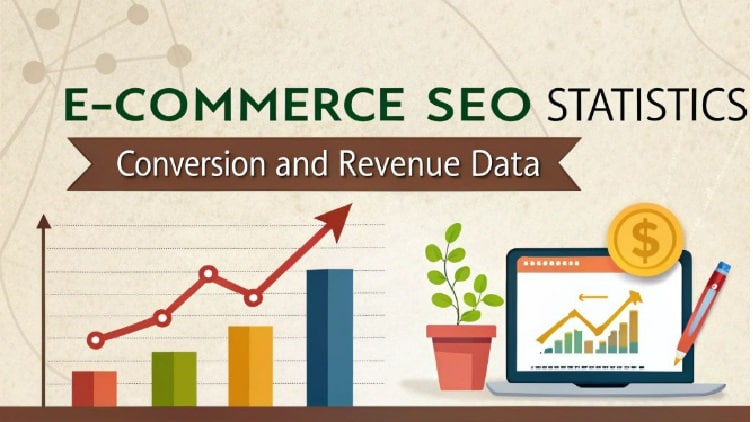
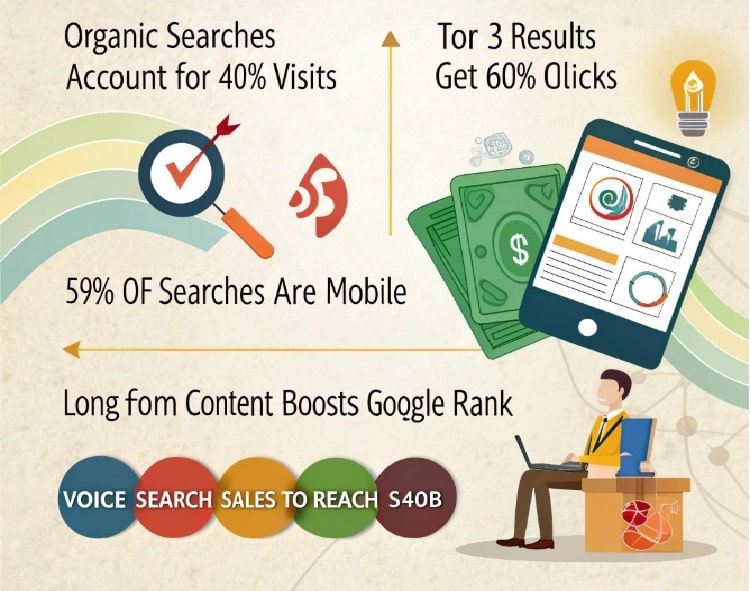
SEO is the magic for e-commerce success. It gets your online store seen and brings in more customers without costing a fortune.
Organic Search Drives Most of the Traffic
Organic search is the top traffic driver for online stores. 40% of all visits to e-commerce sites come from organic search. That’s a lot. Social media is important but only brings in a tenth of the traffic organic search does.
So if you’re not focusing on SEO you’re missing out on a big chunk of customers.
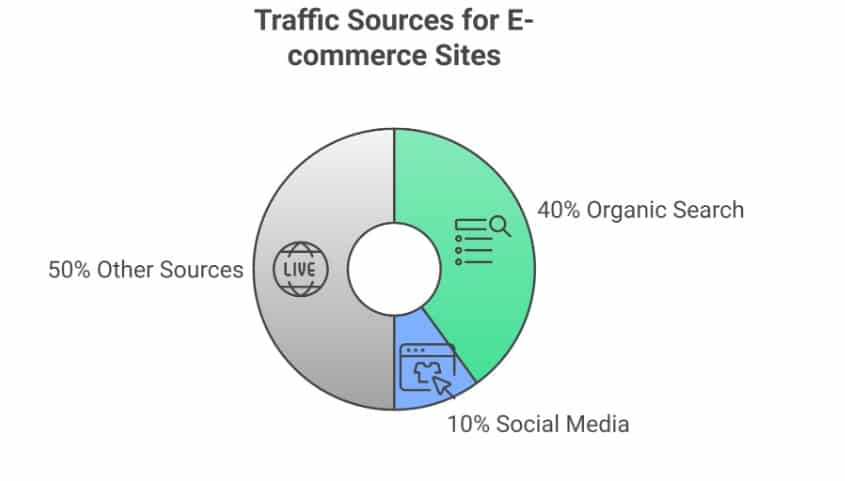
Google has an 84.7% market share of the search engine market. To get your online store seen you need to play by Google’s rules. Good SEO practices will get you higher search rankings and more product visibility.
More than half of all website visits come from organic search, that’s a lot of potential customers who could find your store.
Top Positions Get More CTRs
Top of Google’s search results page is click gold. The first position gets about 30% of all clicks, the second and third get 15% and 10% respectively.
So the top three results get over 60% of the clicks. It’s like musical chairs but with website traffic.
I’ve seen firsthand how moving up one position can bring in a lot of traffic. A client’s site went from 4th to 3rd for a key term and their traffic nearly doubled overnight.
The race is for those top three positions. They’re the difference between a drip and a deluge of visitors to your online store.
E-commerce SEO Stats 2023
E-commerce SEO stats are changing fast in 2023. Let’s take a look at some key numbers that work now.
Mobile is Key
Mobile devices are the e-commerce world. Over 50% of all online shopping happens on phones and tablets. Google knows this and uses mobile-first indexing. This means they look at your site’s mobile version first when ranking pages.
If your site isn’t mobile friendly you’re losing customers and search rankings.
Numbers don’t lie. 59% of all searches happen on mobile devices. But here’s the catch: mobile conversion rates (2.9%) are behind desktop (4.8%). There’s room for growth.
By making your site work on small screens you can increase sales. Think big buttons, fast load times and clear product images.
Site Speed Impacts User Experience and SEO
Site speed affects how users feel about your site. A slow site and people will bounce. This hurts your SEO rankings. Google cares about user experience so it ranks faster sites higher.
1 second delay can cut conversions by 7%. That’s a lot of lost sales for online stores.
Fast sites keep visitors happy and browsing longer. This tells search engines your content is valuable. It also helps mobile users who often have slower connections. Fast load times = lower bounce rates and more time on site.
These factors help your SEO. In short, speed matters for both users and search engines.
Long Form Content Ranks Better
Long form content ranks better. Studies show articles with 1,000+ words rank higher on Google. It’s not a coincidence. Longer pieces go deeper into topics and give more value to readers.
They also keep people on your site longer which search engines love.
But it’s not just about word count. Quality matters too. Good long form content answers questions, solves problems and uses keywords naturally. It’s a win-win. Readers get useful info and your site goes up the search rankings.
And longer articles give you more opportunities to add internal links which helps your overall site SEO.
E-commerce SEO Trends
E-commerce SEO is changing fast. New trends are emerging for online stores.
Voice Search is Coming
Voice search is changing how people shop online. More people are using smart speakers and phones to find products. By 2022 voice search sales could hit $40 billion in the US alone.
That’s a lot of money! So e-commerce sites need to move fast.
Smart businesses are already optimizing for voice queries. They’re using natural language and long tail keywords. It’s not just about text anymore. Voice search requires a whole new approach.
Sites that get it right will get a big slice of this growing pie.
Structured Data
Structured data is a secret weapon for e-commerce sites. It helps search engines understand your content better. By using Schema.org markup you can increase your visibility in search results.
This means more clicks and sales for your online store. Google loves structured data because it makes their job easier. They can show rich snippets which grab users’ attention and stand out from other results.
I’ve seen structured data make a big difference for a site. One client saw 30% more organic traffic after we added product markup. Another saw their CTR double for pages with review snippets.
It’s not just about looking good in search results. Structured data helps Google match your content to the search. This means more relevant traffic and higher conversions.
If you’re not using structured data you’re missing out.
Local SEO Drives Foot Traffic and Purchases
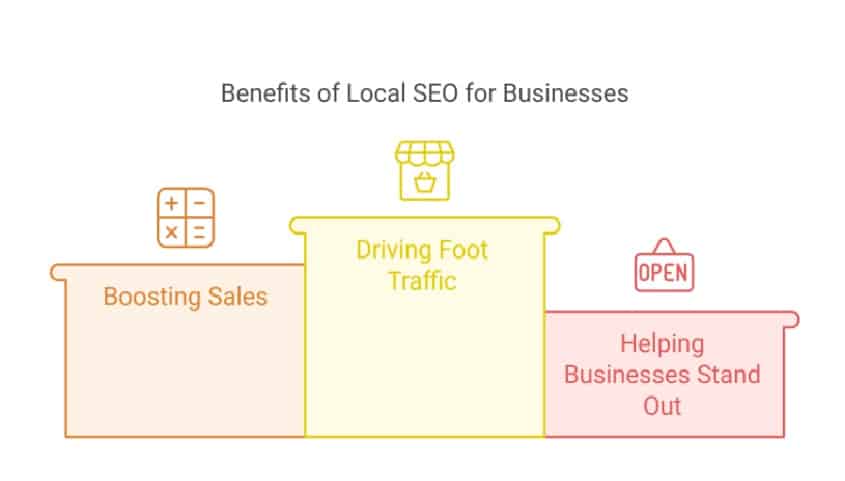
Local SEO is a game changer for businesses with physical stores. 46% of Google searches are local. That’s almost half of all searchers looking for nearby shops, restaurants or services.
And better still 71% of those local searches lead to an in-store visit within 24 hours. That’s a lot of foot traffic!
But it’s not just about getting people through the door. Local SEO also drives sales. People who search locally are often ready to buy. They’re looking for a quick fix for their needs.
By being in local search results businesses can catch these hungry customers. And local SEO helps stores stand out in a crowded market. It’s like having a neon sign pointing to your store but on Google instead of the street.
SEO and E-commerce Revenue
SEO drives e-commerce revenue by driving more traffic and sales. Want to know how? Keep reading!
SEO Converts Websites
SEO converts big time. When you rank higher more people click. More potential customers.
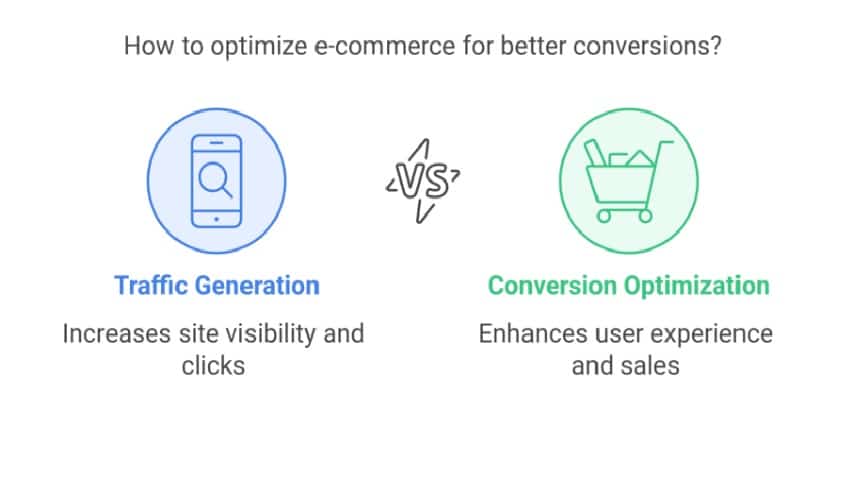
Numbers show how much SEO converts. E-commerce sites convert 2.5-3% of visitors. Professional services convert 12.3% of organic traffic.
That’s a big difference! Adding personal touches like custom product suggestions can increase conversions by 26%. Reviews are another SEO goldmine. They can increase conversions by 270%.
These numbers show that SEO isn’t just about traffic. It’s about turning that traffic into real sales.
User Experience and SEO and Conversions
User experience (UX) matters for SEO and conversions. Good UX keeps people on your site longer which tells search engines your content is valuable. This increases your rankings.
A good website also makes people more likely to buy. For example fast load times and mobile friendly design are UX factors that affect both SEO and sales.
Security is another UX element. 47% of shoppers abandon carts because of security concerns. By making your site secure and showing trust signals you can calm those fears and increase sales.
Also 66% of buyers will pay more for eco friendly products. Adding clear info about sustainability can improve UX and convert green shoppers.
Content Marketing for E-commerce Growth
Content marketing is a big deal for e-commerce growth. It converts six times more than other methods. That means more sales and happy customers. Good content helps people trust your brand and want to buy from you.
It’s like having a chat with shoppers but online.
Video content is a hero in e-commerce. It can convert up to 80%. That’s massive! People love watching product demos and how-to videos. It helps them see what they’re buying and how to use it.
And social media is a big deal. Over 50% of shoppers research products on social media before buying. So sharing great content on social media can pay off.
SEO Tools
SEO tools can help your online store. Google Analytics and Search Console are the keys.
Setting Up Conversion Tracking in Google Analytics
Google Analytics helps track your website’s success. Here’s how to set up conversion tracking:
- Sign in to your Google Analytics account
- Choose the property you want to track
- Click on “Admin” in the bottom left corner
- Select “Goals” under the “View” column
- Click the “+ New Goal” button
- Pick a goal template or make a custom goal
- Name your goal and choose the type (URL, Event, etc.)
- Set up the goal details (like the URL for a “thank you” page)
- Set a goal value if you want to track monetary worth
- Save your new goal
- Test your goal to make sure it’s working right
- Check your reports to see how your goals are doing
This process lets you see how well your site turns visitors into customers. It’s a key part of boosting your online sales and growing your business.
Utilizing Google Search Console for Better Insights
Google Search Console offers valuable insights for e-commerce businesses. This free tool helps you understand how your site performs in search results.
- Track search performance: See which queries bring users to your site. This data helps you spot trends and adjust your content strategy.
- Discover indexing issues: Find out if Google can crawl and index your pages. Fix any problems to ensure your products show up in search results.
- Monitor mobile usability: Check if your site works well on phones. A mobile-friendly site boosts your search rankings and keeps shoppers happy.
- Analyze click-through rates: See how often users click on your listings. Use this info to improve your titles and descriptions for better results.
- Submit sitemaps: Help Google find and index your pages faster. This is key for new products or site updates.
- Check for security issues: Get alerts about hacks or malware. Keep your site safe for shoppers and maintain Google’s trust.
- View links to your site: See which sites link to yours. This helps you spot link-building chances and track your online presence.
- Test robots.txt: Make sure you’re not blocking important pages from search engines. This tool lets you check your file for errors.
- Request indexing: Ask Google to crawl your new or updated pages right away. This speeds up how fast your changes appear in search.
- Track Core Web Vitals: See how your site scores on key user experience metrics. Better scores can lead to higher rankings and more sales.
Conclusion
SEO is a game-changer for online stores. It drives traffic, boosts sales, and grows revenue. As trends shift, smart businesses adapt. They focus on mobile, speed, and great content.
They also use voice search and local SEO to reach more shoppers. By tracking data and using the right tools, e-commerce sites can soar. The future of online shopping is bright for those who master SEO.
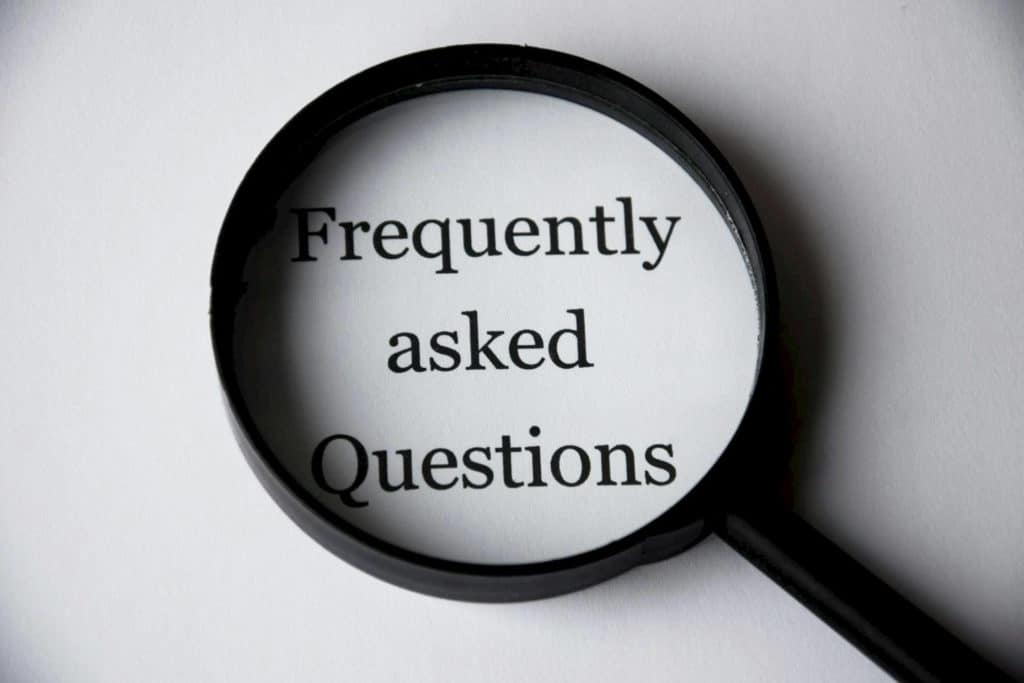
Frequently Asked Questions
-
How does SEO impact e-commerce conversion rates?SEO boosts e-commerce conversion rates by improving search engine rankings.
-
What role does mobile play in e-commerce SEO?Mobile is king in e-commerce SEO. With the rise of m-commerce, optimizing for smartphones is crucial. Mobile apps and responsive design boost user engagement and click-through rates. Don't ignore this trend, or you'll miss out big time!
-
How do social media platforms affect e-commerce SEO?Social media platforms like Instagram, YouTube, and Twitter are game-changers for e-commerce SEO. They build backlinks, increase brand awareness, and drive traffic. Smart marketers use influencer marketing to reach target audiences and shape purchasing behavior.
-
Can artificial intelligence improve e-commerce SEO?You bet! AI is revolutionizing e-commerce SEO. It helps with keyword research, personalization, and data analytics. AI can predict consumer preferences, optimize ad revenue, and enhance customer experiences.
-
How important are click-through rates in e-commerce SEO?Click-through rates are the bread and butter of e-commerce SEO. They show how well your meta descriptions and search engine results page listings perform.
-
What's the connection between SEO and customer lifetime value in e-commerce?SEO and customer lifetime value go hand in hand. Good SEO brings in targeted traffic, leading to better customer engagement and experiences.

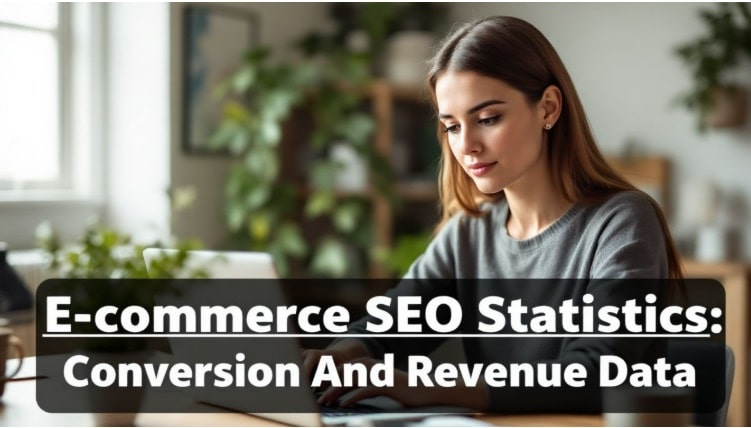
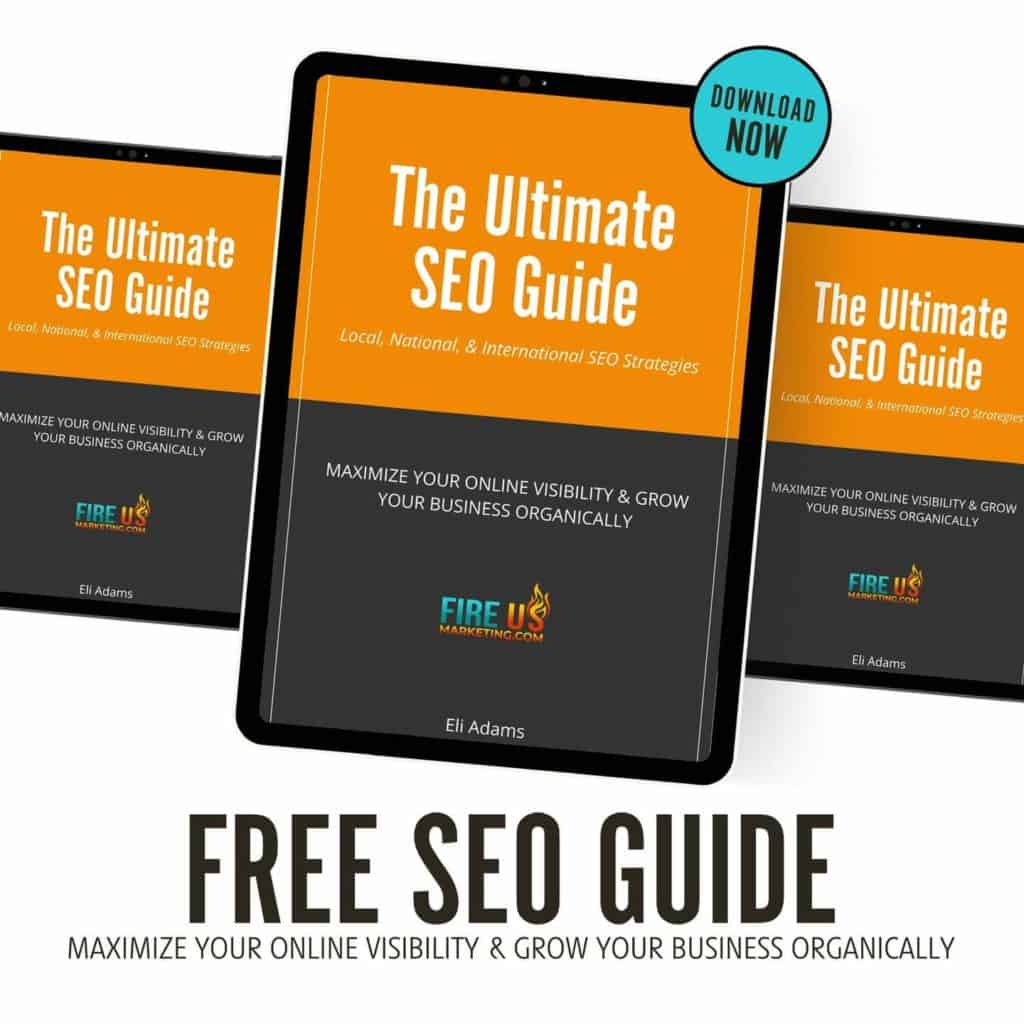

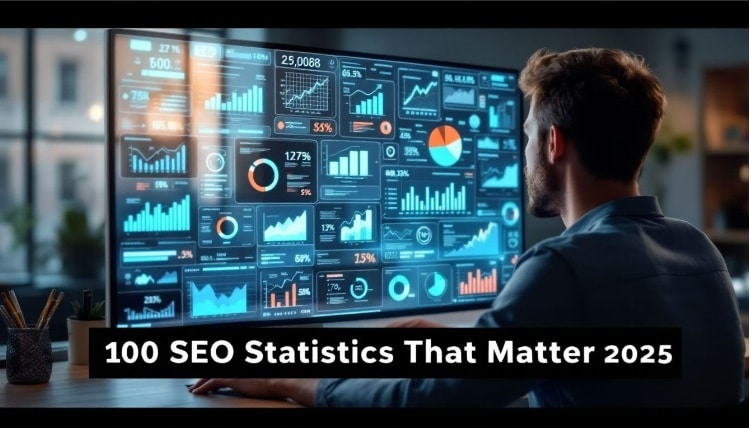
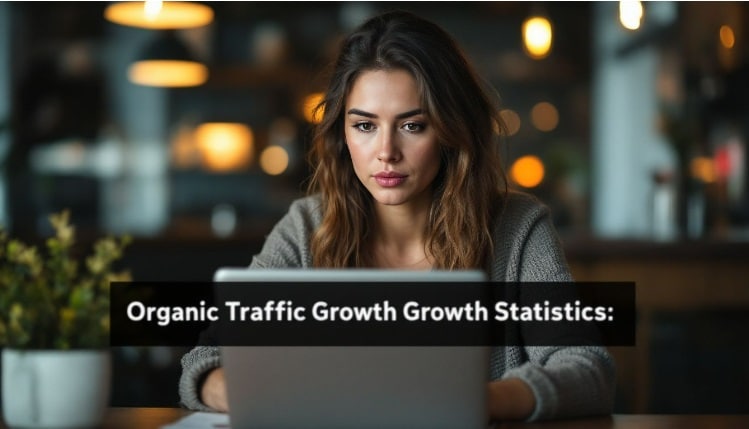

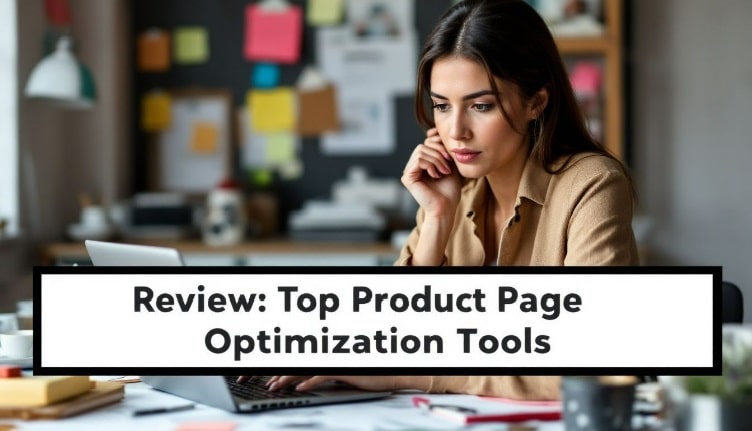
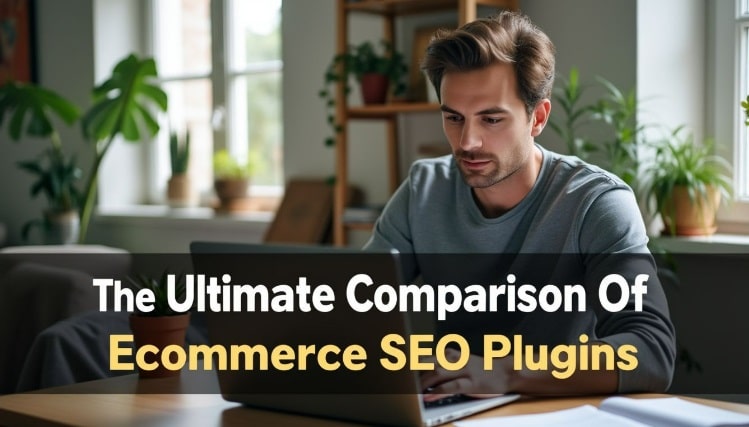
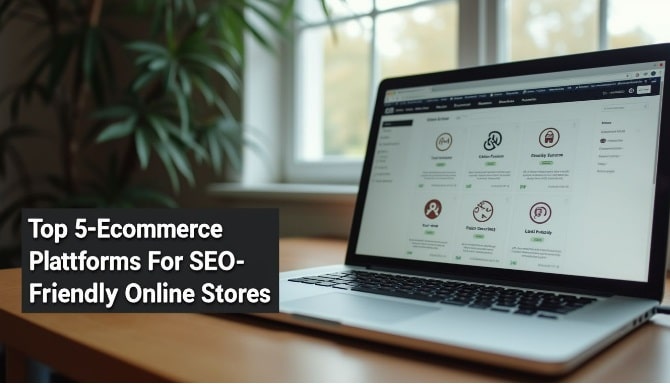
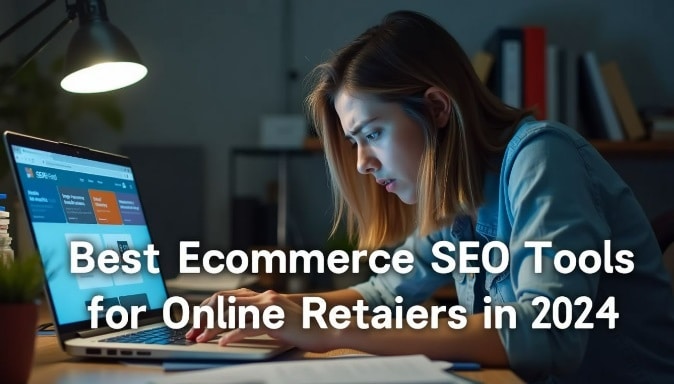

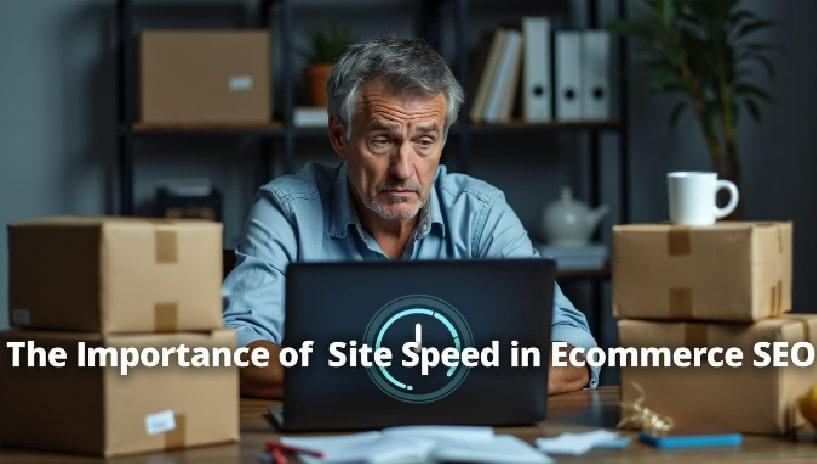
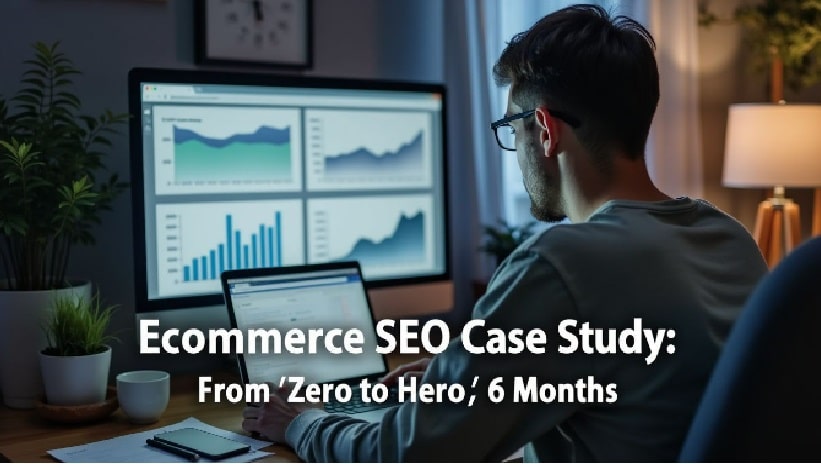

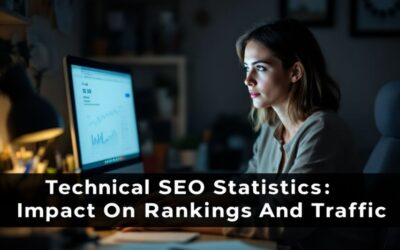

0 Comments